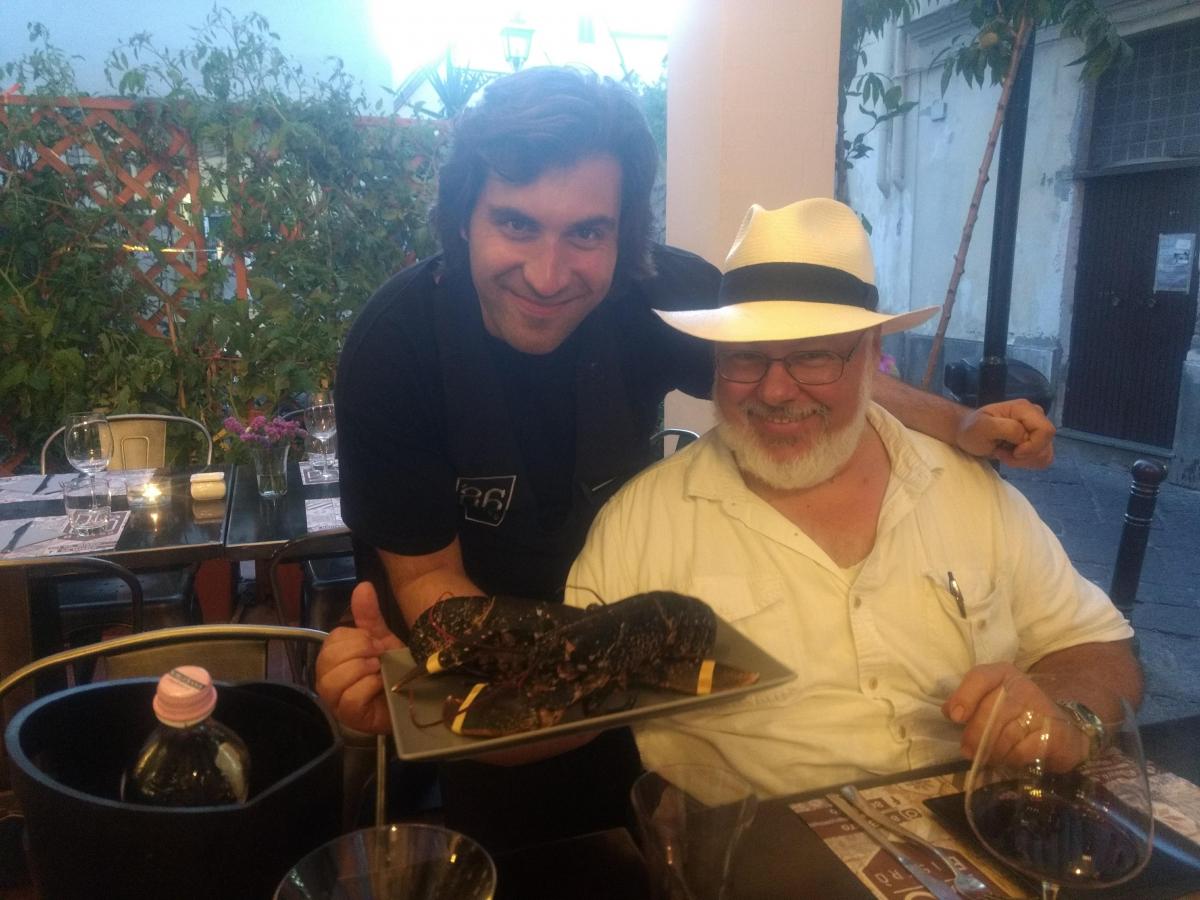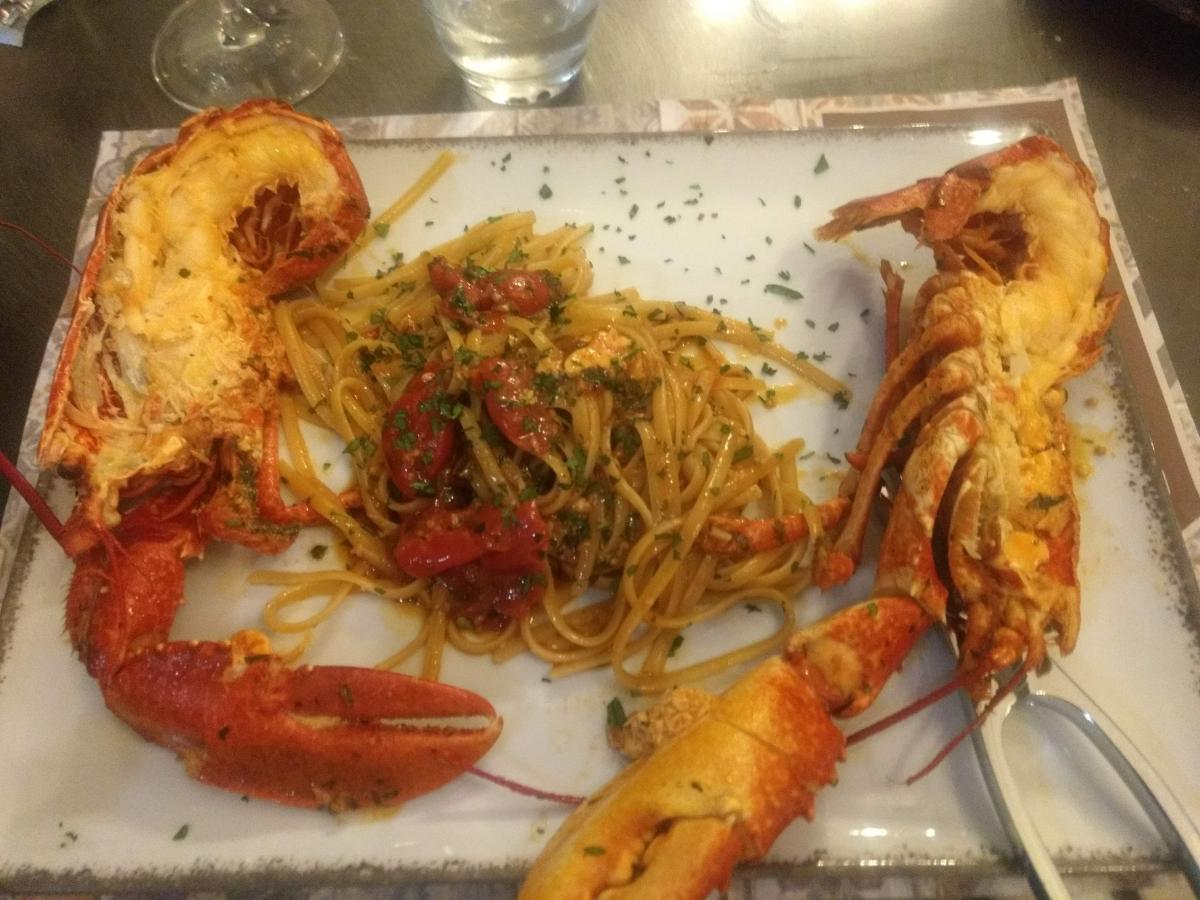
Fans of old-style fancy European cuisine are familar with the spiny lobster, but I was surprised to see another European cousin of our favorite New England crustacean while in Sorrento in 2018.
We had it as the highlight of a very fancy, expensive seafood dinner in Sorrento. Our goal was to compare and contrast the European Lobster (Homarus gammarus) with our American Lobster (Homarus americanus) with an eye to how well recipes for the one can substitute the other.
In Sorrento anyway, the European lobster is called the blue lobster. This is confusing for us because of the celebrity gained by the bright blue mutant lobsters occasionally caught off the New England coast. The European "blue" lobster is very deep blue, so much so as to look black. It cooks up red like an American lobster.
In Italian cuisine, the spiny lobster is the aragosta and this lobster is astice.

The preparation was different, but that was pretty well unavoidable. At our fancy dinner, the restaurauteur Salvatore was absolutely aghast at the idea of boiling the lobster. There was no point trying to force the issue if the chef would have been uncomfortable and we wanted to try the lobster in its best preparation. He served it cut down the middle lengthwise and sauteed, then the oil and pan juices used to dress a hearty linguine with a few flash-sauteed cherry tomatoes and minimal herbs. It was delicious, so now I must reproduce it at home with an American lobster.
The texture of the cooked lobster was identical to that of its American cousin. The lobsters (we had two) were both 600g, so we would call them quarters. It's easy enough to find that size at our local lobster pound for test-cooking purposes.
Flavor was the main difference, but there are many factors to take into account beyond the species. Salvatore told me that the Mediterranean Sea is saltier than the Atlantic, which heightens the flavor of these lobsters (but they are found in the waters all around Europe).
If you read the parent post to this article, then you know about the many other factors, especially the role of absolute freshness. We always buy our lobsters from the lobster pound at Wood's Seafoods in Plymouth, where they are in cold seawater right up until the moment that we buy them. (In fact, we dinged the celebrated ***** New York restaurant Daniel for serving lobster that could have been fresher, and should have been at a $500 dinner in a seaport city.)
Salvatore had his fish set out in the usual Italian way, on a bed of crushed ice in front of the restaurant for passersby to see and admire. It's great marketing and it's fine for fin-fish, but the living lobster does taste fresher when it comes directly from seawater. I have never seen a lobster pound in Europe, in fact I never saw one of these black lobsters until now.
I think at the bottom of it all, the European lobster is probably as good as an American lobster for all equivalent preparations, but I really want to try one steamed, or served in a Lobster Roll!
